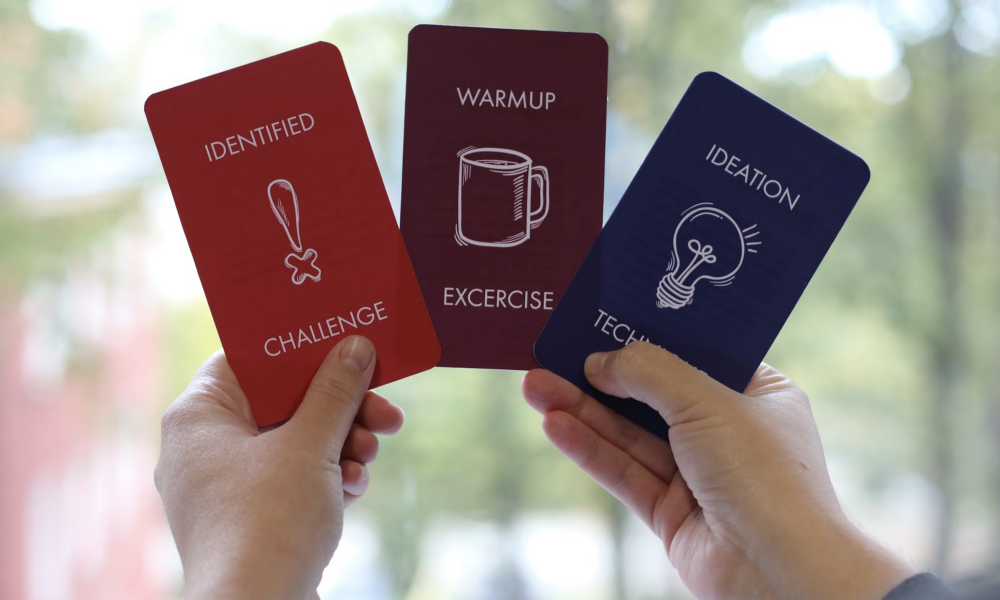
For the Design for Social Innovation class of 2020, EKA IxD MA students partnered with the North Estonian Medical Center (PERH), the largest healthcare provider in Estonia, to tackle four distinct challenges. The common wish was to deliver practical results, interventions that PERH could implement straight away. This meant a considerable amount of work during the seven-week timeframe. Here are the outcomes.
Empowering hospital staff to think and act like service designers
Remote personal medicine is the future. The students’ brief was to help PERH envision an effective and safe remote sample collection service. The team conducted interviews and observations, and quickly mapped several problem areas, such as logistics of route creation, time constraints, and communication between all parties involved.
Mapping their findings and analysing their insights, the students decided to refocus from providing solutions to empowering the hospital employees themselves in actively participating in the service’s evolution. They organised a series of co-designing workshops, where they built shared understanding and ownership around the service stakeholders, created empathy with patients, introduced design methods and gathered insights for next steps. For further development of the service, the team created a simple Service Design Toolkit, a set of tailor-made instructions, templates and cards the hospital staff could use for future developments.
Cult-o-Meter: Challenging cultural structures with low-tech solutions
PERH employs over 4500 people in a steep hierarchy; the students’ task was to find out how they could make sure all time-critical messages reach the life savers on lowest levels. Upon their investigation, the team quickly concluded that the hospital’s communication channels are working just fine, so they set the focus on employee engagement instead. They realised that nurses and caregivers form the backbone of the service, yet, their voice is often unheard on the management level.
So the team set out to ideate how might they shine a light on nurses and caregivers by closing feedback loops and bringing the workers’ initiative closer to the leadership. They came up with a Cult-o-Meter, a message board divided into three sections from “Good” to “Bad”, accompanied by cards that have phrases on them to prompt creative thinking. The idea was to encourage sharing positive feedback and bring attention to complicated topics. For nurses, it’s a platform to share gratitude and undercover role modelling, for managers a backlog of problems and a team health monitor. The prototype was warmly welcomed in the hospital, gathered nearly 40 submissions, generated enthusiasm and provided feedback for further iterations.
Learning from the invisible to design a humane physical experience
PERH is soon going to have a new venipuncture space. The students’ task was to find out how we might increase the humanness of this tedious medical procedure. After conversations with employees and observations at the current venipuncture centre, the team figured that the process is very well managed. Still, the patients are suffering from the “perfect patient syndrome” — often feeling confused, rushed and afraid of the unknown.
So the team set out to establish more confidence in the patients. For this, they decided to redesign the whole floor plan and interior following the emotional, mental and physical principles of universal design. They mapped the visitor’s journey throughout the process and designed the space to address their needs. The result was a fully redesigned venipuncture centre, which accommodated an inclusive waiting area, clear infographics, more streamlined administration facilities and small yet essential interactions, such as mirrors on the wall to enable visitors to tidy up and cookies for a quick energy fix after the procedure. The hospital recognised the students’ work, and talks are underway to implement the changes.
Interdependence: Enhancing interpersonal relationships for better healthcare
PERH challenged the students to reimagine the Colon Cancer screening service. Upon stakeholder interviews, the team learned that a small number of the target group ever reach the screening, so they embarked on a quest to discover how would it be possible to increase the turnout rate. Mapping the journey, students realised that close interpersonal relationships play a crucial role in health behaviour.
Many people who proactively visit health institutions do it due to peer pressure from the family and close ones. There’s a gap in the society-wise system and social norms: during childhood, we’ve got our parents to count on, during elder years, (hopefully) our children. But couldn’t we have someone also in-between? Finally, the team introduced the concept of Interdependence: a system of changes in the thinking, legislature and technology, that would expand the responsibility of personal healthcare to chosen close ones. The system could be initiated through the Estonian Citizen Portal, giving the Health Insurance Fund, family and speciality doctors access, and the close ones the resources to nudge and help people take better care of themselves.
Students: Danai Asteriadi, Jete-Maria Vürmer, Joosep Noorväli, Kaari Sibrits, Mikk Sander Lemberg, Nataliia Kostenko, Valentina Dzhekanovich, Maxim Barrell, Seyed Ali Moafi Madani, Francesco Duc, Jekaterina Suharenko, Sander Kalmus
Mentors: Riina Raudne (Akkadian) and Tanel Kärp (EKA), with additional mentoring help from Josina Vink (AHO, Norway).
A big thank you goes out to: Siiri Heinaru (PERH)
This course was partly supported by the Nordic Council of Ministers´ Higher Education programme and the Cirrus network.
Read more: https://medium.com/ixd-ma/human-centred-design-meets-professional-healthcare-afbf35aae643
Interested in studying Interaction Design in EKA? Find out more information about admissions: https://www.artun.ee/en/admissions/masters/admissions/
